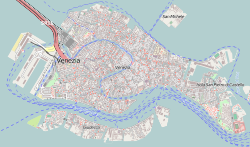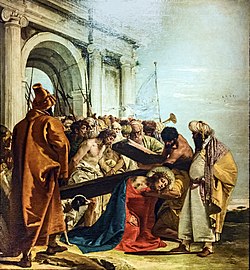| Church of San Polo | |
|---|---|
 Southern side with bell tower | |
| Religion | |
| Affiliation | Roman Catholic |
| Province | Venice |
| Location | |
| Location | Venice, Italy |
| Coordinates | 45°26′13.4″N12°19′47.0″E / 45.437056°N 12.329722°E |
| Architecture | |
| Type | Church |
| Style | Gothic |
| Completed | 15th century |
The Chiesa di San Polo is a Catholic church in Venice, dedicated to the Apostle Paul. It gives its name to the San Polo sestiere of the city.



























